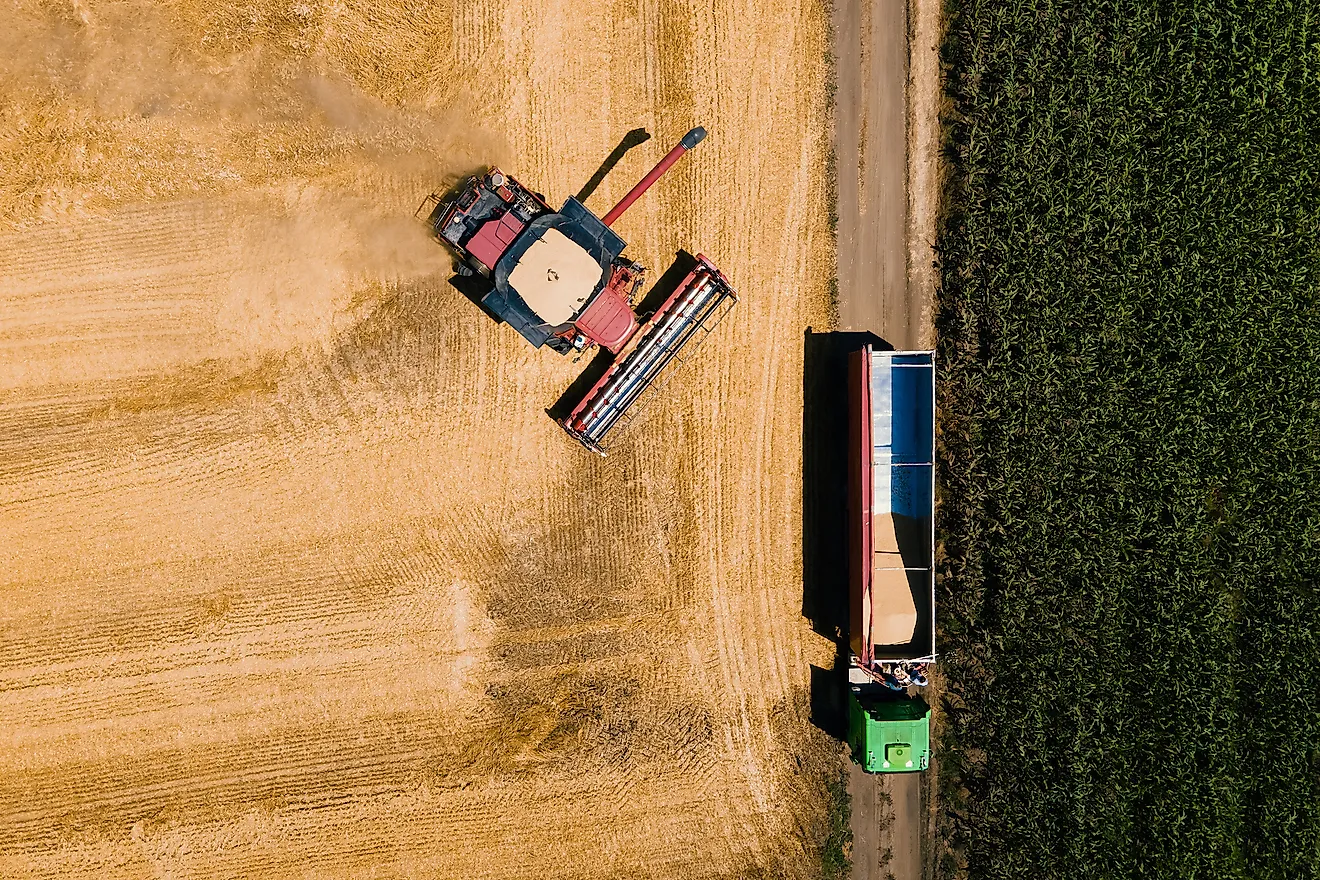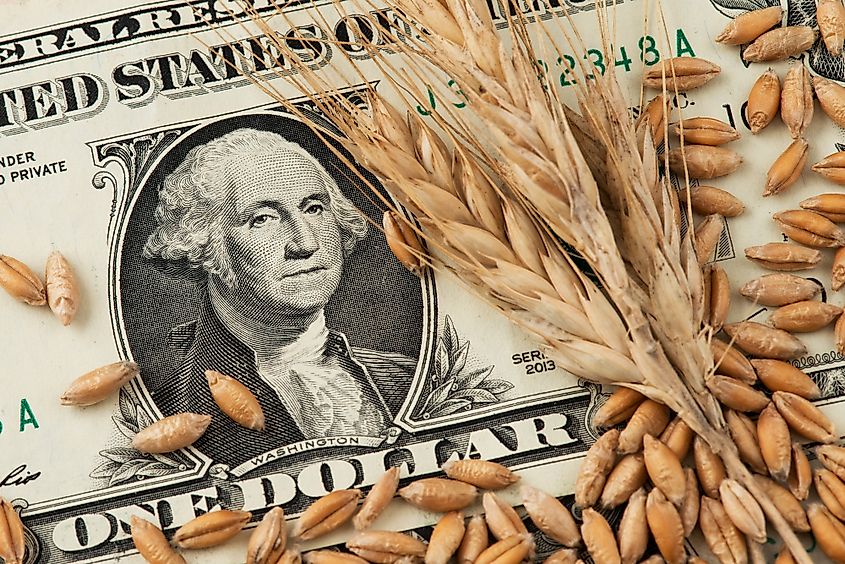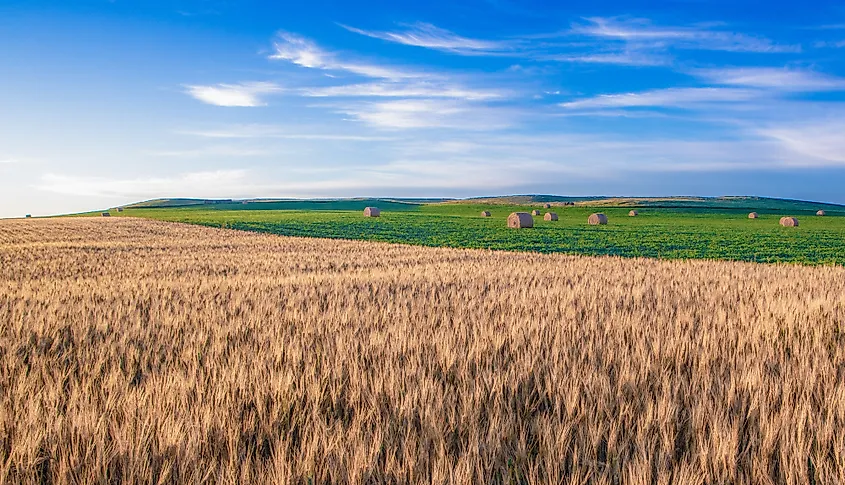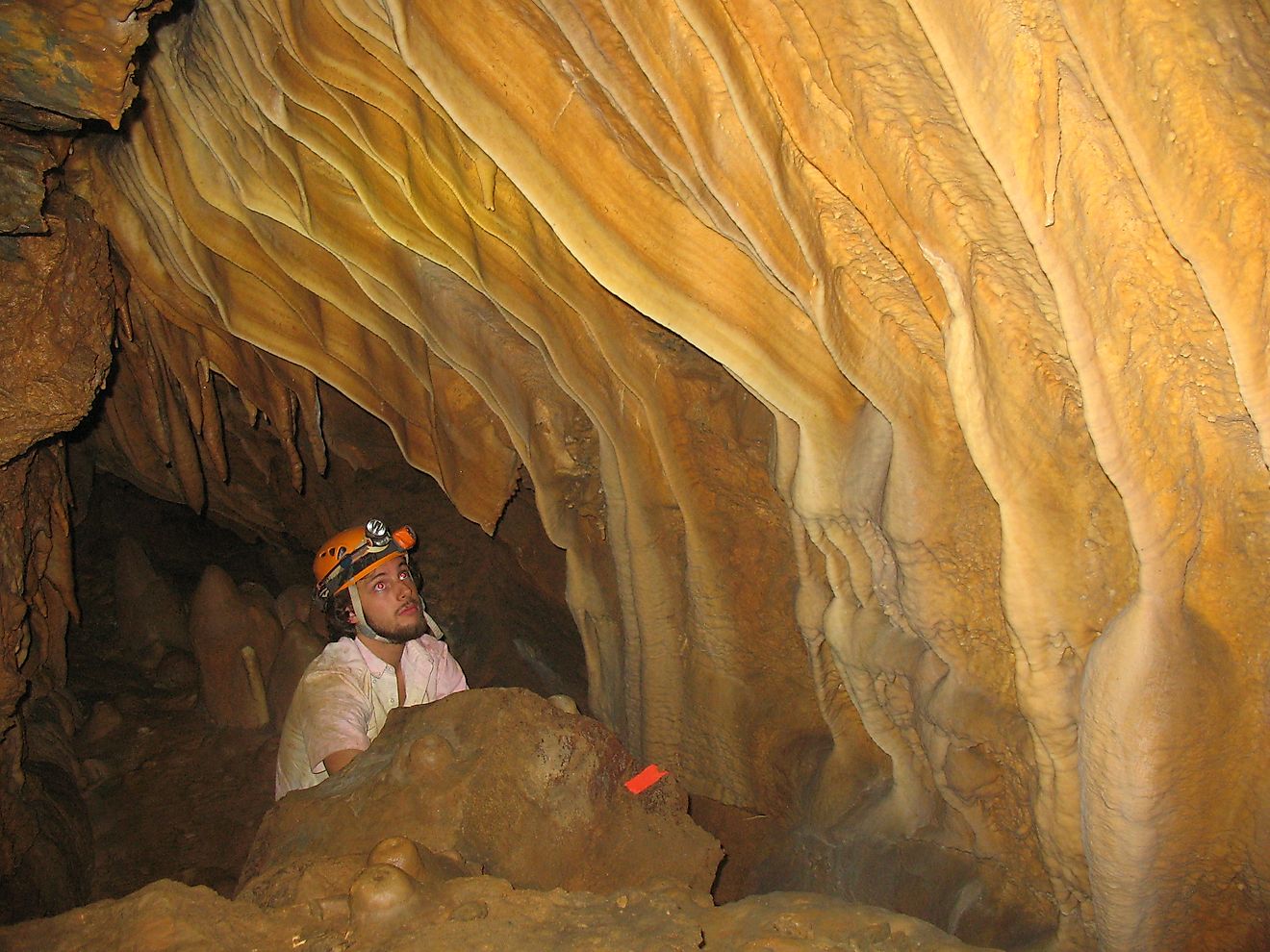Wheat Belt, North America

- The Wheat Belt is a large region in the North American plains in which wheat is the dominant cultivated crop.
- The Wheat Belt stretches from the Canadian Prairie Provinces all the way down to Central Texas.
- Wheat cultivation began in the Wheat Belt in the 19th century.
- The Wheat Belt is subdivided into the Spring Wheat Belt in the north and the Winter Wheat Belt in the south.
- Wheat is the most widely grown staple crop in the world.
The Wheat Belt is a large swathe of territory in the North American plains, in which wheat is the predominant crop. This region straddles the Canada-United States border, from the Canadian Prairie Provinces all the way to Central Texas, for a distance totaling 2,400 km. The Wheat Belt is subdivided into the Winter Wheat Belt and the Spring Wheat Belt. The Winter Wheat Belt contains parts of the US states of Kansas, Oklahoma, Texas, Nebraska, and Colorado, while the Spring Wheat Belt is based in parts of Montana, North Dakota, South Dakota, and Minnesota, as well as the Canadian provinces of Alberta, Saskatchewan, and Manitoba.
A Brief History Of Wheat

The origins of wheat can be traced back 23,000 years ago, when humans began gathering the seeds of plants and eating them. Domestic cultivation of wheat, however, did not begin until about 12,000 years ago. At first, wheat was confined to the Ethiopian Highlands and the Levant region of the Near East, though some experts trace its domestication to ancient Mesopotamia, in modern-day Iraq. Wheat cultivation spread to Greece, Cyprus, and India by 6500 BCE, then to Egypt in 6000 BCE. By 5000 BCE, wheat was being cultivated in what is now Spain and Germany. About two thousand years later, wheat cultivation began in England and Scandinavia. Wheat cultivation in North America began during the colonial period. By the 18th century, wheat became the most prevalent cereal crop. The cultivation of wheat in what is now the Wheat Belt began in the United States and Canada in the 19th century.
Up until the 19th century, the methods used to cultivate wheat remained largely unchanged from ancient times. In 1834, however, an American inventor named Cyrus McCormick invented a reaping machine. That same year, the first threshing machine was invented. These machines made cultivating wheat faster. The 1880s saw the introduction of the steam engine. This was followed by the emergence of the internal combustion engine in the 1920s. These two innovations replaced horses and cattle, making wheat cultivation even easier. The growth of rail networks also led to the movement of wheat cultivation westward into the present-day Wheat Belt.
Facts About Wheat

Today, wheat is the most widely grown staple crop in the world. China is the world’s leading producer of wheat, cultivating a total of more than 134 million tonnes. For its part, the United States is the 4th biggest producer of wheat in the world, with production totaling more than 47 million tonnes. North Dakota, which is located in the Spring Wheat Belt, produces more wheat than any other state. Canada, where some of the Spring Wheat Belt is located, produces just under 30 million tonnes, making it the world’s 7th biggest wheat producer. Saskatchewan is Canada’s leading wheat-producing province.
Wheat is eaten by 2.5 billion people in 89 countries. It is especially popular in North Africa, and West and Central Asia, where it accounts for as much as half the calories consumed in these regions. There are many different types of wheat. In the United States, wheat is classified by climate. Thus, there is spring and winter wheat, which are further classified into different types, including hard red winter wheat, hard red spring wheat, soft red winter wheat, white wheat, and durum. This wheat is used in the production of many things we eat and drink today, including flour, bread, pastries, pasta, pizza, beer, crackers, cereals, cookies, and many more.
Winter Wheat vs. Spring Wheat

As previously mentioned, the Wheat Belt is divided into the Winter Wheat Belt and the Spring Wheat Belt. Thus, different types of wheat are cultivated in these areas, depending on the climate conditions. Hard red winter wheat is grown in the Winter Wheat Belt, though it is not planted until the fall so that it can draw on moisture provided by autumn rains. When summer comes around, the wheat is exposed to summer heat that makes it ripen. The wheat is harvested in July. Winter wheat is the most commonly-produced wheat in the United States, accounting for about 75% of the country’s total wheat production.
In contrast, hard red spring wheat is grown in the Spring Wheat Belt. In this area, winters are colder and harsher, thus winter wheat cannot be grown in this part of the Wheat Belt. Instead, planting is done in the spring. The wheat ripens during the summer months, and is harvested in the fall.











